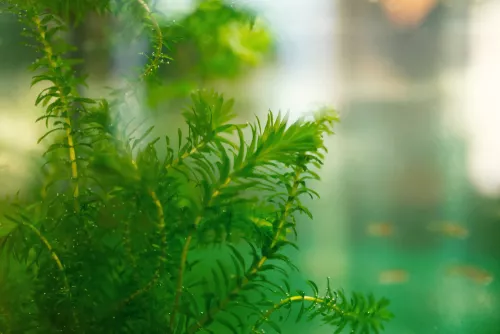- How aquatic plants contribute to water purification
- Which aquatic plants promote the purification of the water
It's no fairy tale: aquatic plants actually have the potential to help keep pond water clean. This guide explains which plants are particularly useful in this context and how the water is cleaned.
 The waterweed produces a lot of oxygen
The waterweed produces a lot of oxygen
How aquatic plants contribute to water purification
With the aquatic plants, nature has "invented" an excellent pond filter that ensures an optimal recycling cycle. This cycle works as follows:
- Aquatic plants produce oxygen. The pond fish benefit from this.
- Pond fish supply carbon dioxide, which in turn is consumed by the aquatic plants.
- Aquatic plants provide food for the fish (herbivores).
- Fish give (back) nutrients to plants through their waste products.
In short, the aquatic plants and pond fish support each other. It is a perfectly "engineered" circuit that keeps the water clean and avoids unpleasant odors.
Accordingly, you only need an additional pond filter if the natural balance described is disturbed in any way. This can be the case, for example, if you have an excessively large fish population in your pond.
Note: water purification by aquatic plants also implies combating algae.
Which aquatic plants promote the purification of the water
The choice of aquatic plants is crucial in order to use the natural cleaning function as effectively as possible.
Important: Only underwater plants are good oxygen producers. In contrast, some floating plants are considered excellent pollutant absorbers.
One of the best aquatic plants for water purification is the duckweed (bot. Lemna), which is often used in waste water ponds and sewage treatment plants.
The spring moss (Fontinalis antipyretica) even received the "Moss of the Year" award in 2006 - due to its year-round oxygen-producing and water-purifying effect.
The waterweed (Elodea) also carries out proper photosynthesis and thus keeps the pond water clean and rich in oxygen.
An overview of other suitable aquatic plants for water purification:
- Rush (Juncus)
- Hedgehog Flask (Sparganium)
- Water irises (Iris pseudacorus)
- Swamp Forget-Me-Not (Myosotis scorpioides)
tips
Reeds can also be used for larger ponds. However, this spreads very quickly and is therefore of little use in smaller water oases.